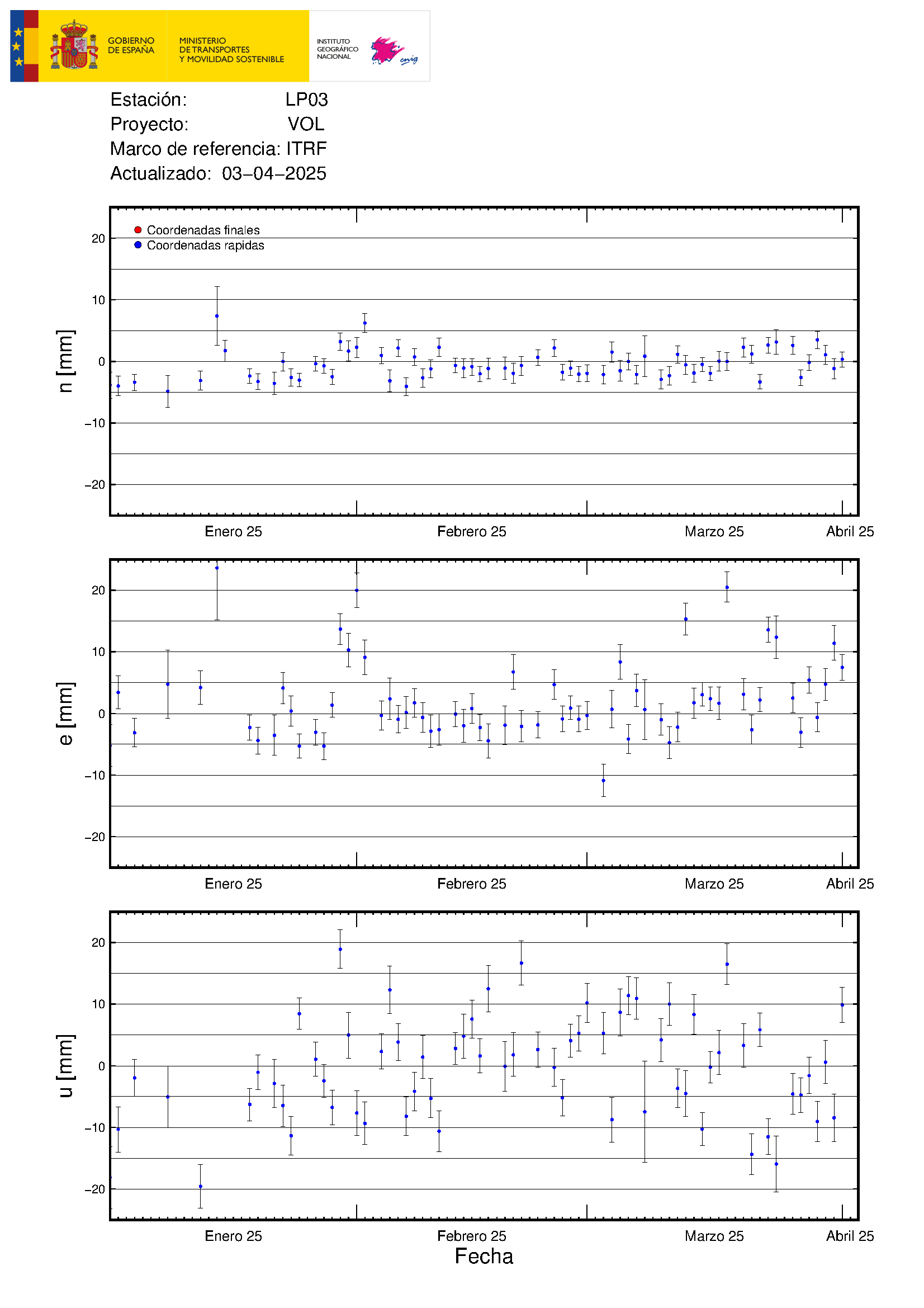MNTornadoGuy
Member
There appears to be quite a bit of inflation ongoing at La Palma with ~2 inches of vertical deformation.


Follow along with the video below to see how to install our site as a web app on your home screen.
Note: This feature may not be available in some browsers.

15.20 THE HIGH OUTPOURING OF LAVA FROM THE VOLCANO OF LA PALMA CREATES "EPHEMERAL FLOWS"
"The eruption continues with a predominance with the effusive phase," said María José Blanco, director of the National Geographic Institute in the Canary Islands, at the beginning of the appearance this afternoon. The abundance of magma emission is causing, she said, "ephemeral flows." One more day, she pointed out that the orography of the main cone of the volcano continues to change. The volcanic explosiveness index continues at a value of 2 on a scale of 8.
Seismicity is "almost non-existent" on the surface, it focuses on levels of 10 to 15 kilometers and especially from 20 kilometers deep. As in the previous days, "it is possible that more sensed quakes will occur." Of those detected in the last hours, the one of greater intensity has occurred in the morning of this Friday and has been 4.5.
Volcanologist Juan Carlos Carracedo believes that the eruption of the volcano in Cumbre Vieja, in La Palma, is "stabilized", because now the magma is coming "easily" to the surface and "the foreseeable", he says, is that it continues to flow "with the same force and volume" until it is exhausted.
In statements to Efe, Carracedo admits the possibility that there may be new changes in the eruptive process, as there have been so far, if it is the case that the cone is refilled and broken again and the lava comes out scattered.
"The worst thing," he says, is that there was "some kind of major obstruction that would force the system to break on the other hand or cause explosions of great magnitude," but "it seems that the emission duct is sufficiently developed and clean for the lava to come out without difficulty."
At the beginning of the eruption, Carracedo adds, the outlet duct was "more or less unreestablished and there were falls, plugging of the cone. There were more ups and downs. Now it seems more continuous, the lava is coming out easily."
The one who is considered one of the great references of volcanology in Spain believes that once the lava has reached the sea, "no matter how much magma it produces" the volcano, "it will accumulate on the seabed".
Regarding the data on deformation of the terrain, the technical director of the Plan commented that there has been a slight reversal of the deformation observed yesterday. In this sense, Blanco revealed that the horizontal deformation recorded in the nearest station of the eruptive center has partially reversed, but that its behavior and observable phenomena in the area will continue to be studied until more information is available. The rest of the stations, he said, do not show significant deformation.
Regarding seismicity, Blanco pointed out that earthquakes have increased their frequency and magnitude, but they are recorded at intermediate and deep depths and surface seismicity is almost non-existent. However, Blanco said that there will continue to be sisms and that they will be felt by the population.
These very recent "spotter" pictures are reassuring: a plinian column rises above winds rather than interacting with them. That hill isn't in or near the stratosphere.
Still serious, but in this layperson's opinion, also still within the range of predicted behavior, if it isn't Plinian.
Currently there is a high probability of earthquakes above magnitude 4.5 and in the last hours there have been about 30 earthquakes, with a maximum magnitude of 4.6...
9.35. TWO EARTHQUAKES OF 4.5 AND 4.6 SHAKE LA PALMA DURING THE NIGHT
The 24-hour monitoring volcanic monitoring network of the National Geographic Institute (IGN) has located during the night a total of 37 earthquakes associated with the eruption of the Cumbre Vieja volcano,two of them of magnitudes greater than 4 (mbLg).
The maximum magnitude recorded was 4.6 (mbLg) corresponding to the earthquake located southwest of the municipality of Villa de Mazo at 05.41 hours. With intensity III-IV EMS and a depth of 37 km, it was felt in numerous nuclei throughout the island. This is the largest earthquake to date.
This tremor was followed an hour later (07.07 hours) by another earthquake of 4.5 (mbLg), also southwest of Mazo, with intensity IV-V and a depth of 37 km. Like the previous one, it was felt in practically all the municipalities of the island.
Yesterday 83 earthquakes were located, the largest of 4.5 mbLg, located southwest of the municipality of Villa de Mazo at 08.02 hours. With intensity III-IV EMS and a depth of 36 km, this tremor was also felt on almost the entire island of La Palma. Europa Press reports.


